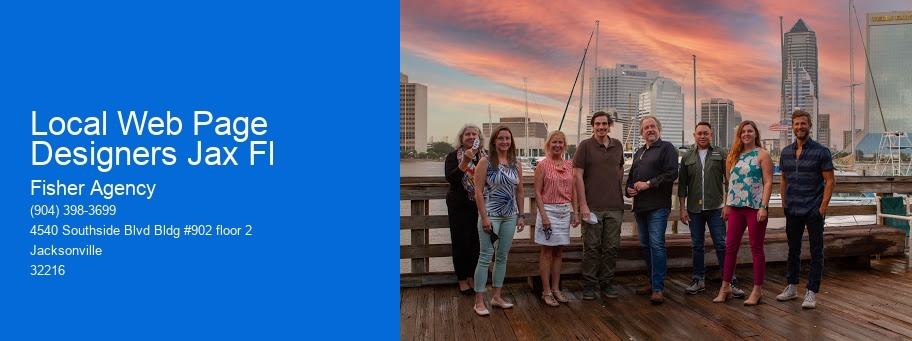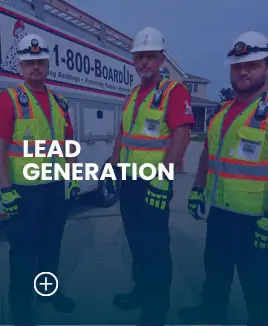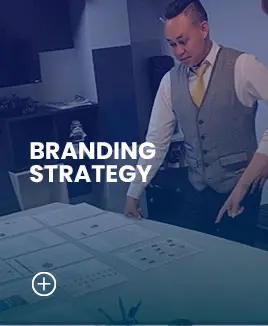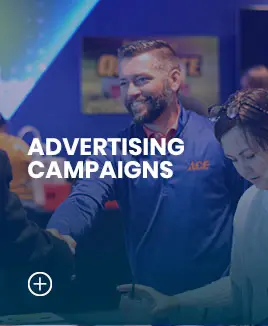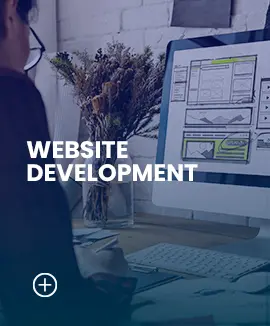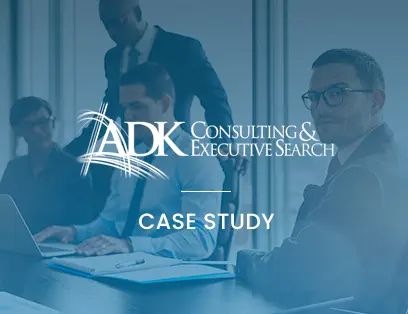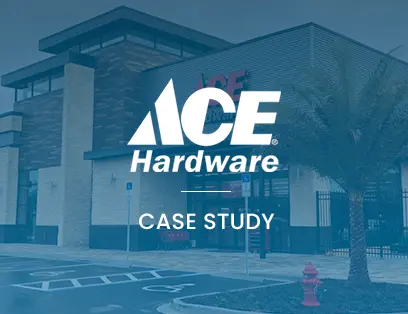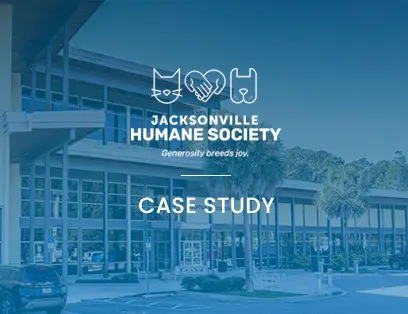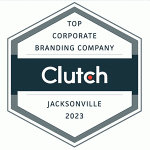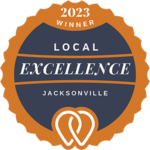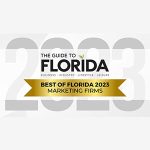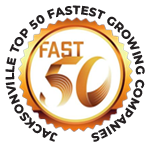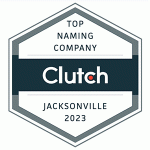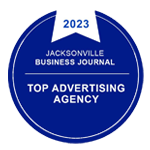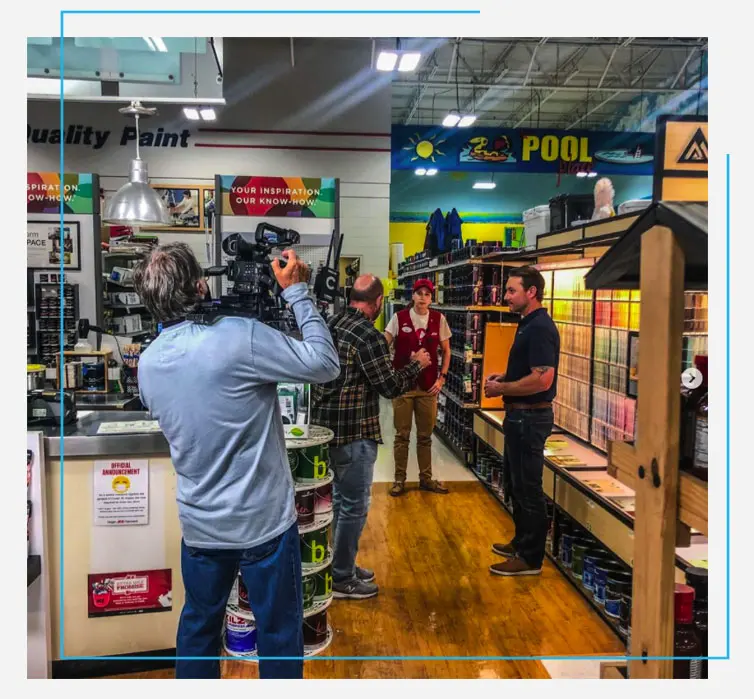Are you looking to grow your business through lead generation? Maybe you need a fresh new brand to increase leads. At Fisher Agency, a top marketing and design agency based in Jacksonville, FL, we have some of the best marketing strategies that will help you hook new clients. It doesn’t matter if you’re a Fortune 500 company or a small business; we can find the marketing angle that works best for you. If you are looking for web design, we do that. If you are looking for branding and logo design, we do that. And, if you are looking for digital marketing, we do that, too. In fact, we can put together a comprehensive marketing plan to determine the most cost-effective advertising strategies for you.
Local Web Page Designers Jax Fl: A Creative Digital Company Can Craft A Compelling Online Existence For Your Organization
Providers Used by Website Style Agencies
Ever seem like you're screaming into deep space with your existing website? Like you've constructed a lovely shop, however no one can discover the door? That's a typical frustration. Numerous services battle with sites that just don't deliver. They may be visually attractive, but lack the tactical style and functionality required to bring in and convert visitors. It's like having a sports cars and truck with a lawnmower engine-- looks terrific, but does not carry out.
Comprehensive Solutions for a Digital World
At Fisher Agency, we understand these difficulties thoroughly. We don't just develop websites; we craft digital experiences that drive results. Our approach is holistic, dealing with every aspect of your online presence to guarantee it's not only aesthetically pleasing however also extremely efficient.
- Custom-made Website Design: We customize every website to show your special brand name identity and service goals. Forget cookie-cutter design templates; we're about bespoke solutions.
- E-commerce Development: Ready to offer online? We build robust and user-friendly e-commerce platforms that make purchasing a breeze.
- Search Engine Optimization (SEO): A beautiful website is worthless if no one can discover it. Our SEO techniques ensure your site ranks high in search outcomes, driving organic traffic.
- Content Creation: Engaging material is king. We create compelling copy and visuals that resonate with your target market and keep them returning for more.
Opening Your Online Potential
Think of a site that not only looks stunning but likewise easily guides visitors through the sales funnel, transforming them into faithful customers. A site that ranks high on Google, bringing a stable stream of qualified leads. A digital presence that truly shows the worth you offer. That's the power of a well-executed site design method.
With Fisher Agency, you're not simply getting a website; you're investing in a thorough digital option created to raise your brand name and drive sustainable development. We dive deep into understanding your company, your target market, and your competitive landscape to create a website that truly stands apart. From initial principle to last launch, we're with you every action of the way, guaranteeing your vision ends up being a reality. Let us change your online presence into an effective engine for success!
Mobile-First Approach
Did you understand that more than half of all web traffic comes from mobile gadgets? If your site isn't enhanced for mobile, you're basically locking the door on a big sector of possible clients. We focus on mobile-first style, guaranteeing your website looks and operates perfectly on any gadget, supplying a smooth user experience for everybody.
Opening Development: The Advantages of a Site Style Firm
Ever seem like your online existence is stuck in the digital dark ages? Like your website, the face of your company online, isn't quite showing the radiance of what you provide? It's a typical problem. Lots of services put resources into outstanding items or services but stumble when it concerns showcasing them successfully online. It's like having a treasure chest but forgetting to unlock it. What if your website isn't converting visitors into clients? What if you're losing possible company due to the fact that of out-of-date style or cumbersome navigation? This is where the knowledge of a website style company steps in, using a beacon of hope in the often-turbulent seas of the web.
Beyond Looks: Strategic Advantages
A top-tier firm, like Fisher Agency, brings more to the table than just pretty pictures; they are designers of digital experiences. They comprehend the subtleties of user experience (UX) and user interface (UI) design, guaranteeing your site isn't just visually enticing but also incredibly intuitive. Think about it: a seamless journey for your visitors, guiding them easily from landing page to conversion. This isn't almost making things look excellent; it's about making things work.
- Boosted User Experience: A properly designed website keeps visitors engaged and motivates them to explore further.
- Enhanced Seo (SEO): A professionally designed website is most likely to rank higher in search results page.
- Increased Conversion Rates: A clear and persuasive website style can substantially boost your sales.
The Fisher Agency Difference: Browsing the Digital Maze
Fisher Agency stands out at comprehending your target market and crafting a site that speaks straight to their needs and desires. They don't just develop websites; they construct relationships. By carrying out comprehensive research study and analysis, they can determine the optimum design components, content method, and calls to action that will resonate with your perfect client. They recognize the difficulty of sticking out in a congested market. They offer a detailed method to website design, guaranteeing your site is not just visually stunning however likewise tactically aligned with your organization goals.
Staying Ahead of the Curve
The digital landscape is continuously developing. What's fashionable today may be outdated tomorrow. A website design company remains on top of the most current trends, technologies, and best practices, ensuring your website stays fresh, relevant, and competitive. Did you know that mobile-first indexing is now a main aspect in online search engine rankings? Agencies comprehend the value of responsive style, guaranteeing your site looks and operates flawlessly on any device. You acquire access to a group of skilled specialists with diverse proficiency, from designers and designers to content strategists and marketing experts. This collective approach ensures that every aspect of your site is optimized for success.
Translating the Website Design Agency Project Workflow
Ever seem like you're herding cats when attempting to get a site job off the ground? It's a common scenario. A disorganized job workflow can result in missed deadlines, swelling budgets, and an end product that does not rather hit the mark. It's like trying to bake a cake without a dish-- untidy and unpredictable.
The Initial Consultation: Laying the Foundation
This isn't just a chit-chat session; it's the blueprint phase. The Fisher Agency, for instance, dives deep, asking questions you might not have actually even thought about. What are your KPIs? What's your brand voice? Who is your ideal customer, truly? Understanding these subtleties early on prevents costly revisions later.
Design & & Development: Where the Magic Occurs
- Wireframing: Think about it as the skeleton of your website.
- Mockups: This is where the visual appeal comes to life. Does it resonate with your brand name?
- Development: Code, code, code! Making sure performance and responsiveness.
A smooth handoff between design and development is important (Fisher Agency). Have you ever seen a beautiful style get butchered during the advancement phase? They ensure smooth communication to maintain design stability throughout the whole process
Material is King, but Strategy is Queen
Having a hard time to articulate your brand name's story? It is a common situation - Fisher Agency. Lots of organizations have a tough time understanding where to start. The Fisher Agency comprehends this fragile process. They craft compelling narratives that resonate with your audience. They likewise enhance your material for online search engine, guaranteeing you're not simply saying something, however that individuals are in fact hearing it
Screening & & Launch: The Final Frontier
Before you pop the champagne, extensive screening is necessary. Do all the links work? Is the site responsive across various devices? The Fisher Agency leaves no stone unturned. And when it's time to launch, they ensure a smooth transition, reducing downtime and optimizing effect. Did you understand that a sluggish filling time can drastically impact your bounce rate and lower your online search engine ranking? Every safety measure is taken to make sure an effective launch.
The Secret Sauce: Interaction & & Openness
What sets an excellent site design agency apart? It's not just technical ability; it's communication. Routine updates, transparent job tracking, and a determination to listen-- these are the trademarks of an effective partnership. The Fisher Agency keeps you in the loop every action of the way. Fisher Agency. This prevents misunderstandings and ensures that the end product aligns with your vision. They utilize task management tools that permit you to see how the site is coming along
Progressing Landscapes: Site Design Agency Trends
Ever feel like websites are beginning to look ... the same? It's easy to fall under the trap of following the crowd, but that's a surefire way to blend into the digital wallpaper. The existing wave is everything about sticking out. Believe asymmetrical designs, vibrant typography that shouts character, and interactions that shock and delight. Forget cookie-cutter design templates; personalization is king. Are you ready to embrace the unconventional?
Among the most significant shifts? Ease of access. It's no longer an afterthought, it's a basic requirement. Websites require to be inclusive, dealing with users with specials needs. This isn't practically ticking boxes; it has to do with expanding your reach and developing a much better experience for everybody. If your site isn't accessible, you're leaving prospective consumers-- and income-- on the table. The user experience need to always be at the leading edge.
The Mobile Imperative
Mobile-first isn't simply a buzzword; it's the truth. More individuals are searching on their phones than on desktops. If your website isn't optimized for mobile, you're essentially invisible to a big segment of your audience. It's not sufficient to just diminish your desktop site; you need a devoted mobile experience that's quick, user-friendly, and engaging. Is your site truly responsive, or are you simply paying lip service to mobile?
Visual Storytelling
Gone are the days of endless blocks of text. Visuals rule supreme. Top quality images, videos, and animations can communicate intricate information quickly and memorably. Beware of stock pictures that shriek "generic." Invest in original visuals that catch your brand name's essence and inform your unique story. A picture, after all, is worth a thousand words.
Navigating the ever-changing digital style landscape can be a challenging job. You want to be innovative, but what if your style fends off possible clients? What if your message is lost in translation? The team at Fisher Agency understands this balancing act. They skillfully mix advanced style with user-centric concepts, guaranteeing your site not only looks wonderful however likewise drives results. They dig deep into your brand name's identity, crafting a digital experience that resonates with your target market and sets you apart from the competition. Their website design process guarantees you do not simply have a site; you have a powerful tool for growth.
- Interactive Elements: Engaging users through animations, micro-interactions, and gamification.
- Minimalism: Welcoming simpleness and clean style for a clutter-free experience.
- AI-Powered Design: Using AI tools for style ideas and automation.
A pro suggestion: Do not undervalue the power of whitespace! It's not simply void; it's a design component that can enhance readability and create a sense of calm. Use it strategically to direct the eye and emphasize crucial information.
Premier Jacksonville, FL Website Design Services
Jacksonville, Florida, a dynamic center in the Sunlight State, boasts a population exceeding 900,000, making it the most populated city in Florida and the biggest city by location in the contiguous United States. Understood for its gorgeous beaches, substantial park system, and thriving company environment, Jacksonville uses an unique mix of city facilities and natural beauty. The city is a major transport and circulation center, with a deepwater port and substantial highway and train networks. Jacksonville's economy is diverse, with crucial sectors consisting of finance, healthcare, logistics, and advanced manufacturing. With a growing arts and culture scene, including museums, theaters, and music places, Jacksonville supplies a high quality of life for its citizens and visitors alike.
If you are prepared to elevate your online presence, connect to Fisher Agency for a complimentary assessment. They can provide professional suggestions and guidance on your Site Design Agency needs.
| Website Design | Creating a site's visual appearance and user experience is key to drawing in and retaining visitors. Quality Website Design improves a brand and leads users smoothly through the digital realm. | https://en.wikipedia.org/wiki/Web_design |
| User Interface Design | User Interface Design emphasizes the aesthetic aspects and interaction of a digital product. A carefully designed UI is vital for generating appealing and easy-to-use digital experiences. | https://en.wikipedia.org/wiki/User_interface_design |
| User Experience | User Experience focuses on how people sense when engaging with a digital product. It plays a critical role in creating interesting and productive online platforms. | https://en.wikipedia.org/wiki/User_experience_design |
| Responsive Web Design | Responsive Web Design ensures optimal viewing results across various devices. It's vital for making dynamic digital platforms. | https://en.wikipedia.org/wiki/Responsive_web_design |
| Html | Html gives the framework and content for webpages. It is essential for creating the graphic layout and engaging features of online existence. | https://en.wikipedia.org/wiki/HTML |
| Css | Css dictates the visual appearance of online content, governing elements like layout, colors, and fonts. This styling language is crucial for developing engaging and user-friendly digital experiences. | https://en.wikipedia.org/wiki/CSS |
| Javascript | JavaScript animates web pages, rendering them interactive and dynamic. It's essential for developing captivating user experiences in online environments. | https://en.wikipedia.org/wiki/JavaScript |
| Web Accessibility | Web Accessibility assures digital content is accessible by everyone, including people with disabilities. Incorporating accessibility from the start of development creates more inclusive and user-friendly digital experiences. | https://en.wikipedia.org/wiki/Web_accessibility |
| Web Development | Web Development is the creation and upkeep of sites on the internet, guaranteeing performance and user experience. It is critical for establishing an online existence and creating engaging digital platforms. | https://en.wikipedia.org/wiki/Web_development |
| Content Management System | A Content Management System (CMS) aids in creating, managing, and altering digital content. It allows users to build and maintain a online presence without needing to code. | https://en.wikipedia.org/wiki/Content_management_system |
| Search Engine Optimization | Search Engine Optimization enhances online presence through well-planned content and technical adjustments. This process is crucial to improve a site's ranking and attract more organic traffic, leading to greater success for any online venture. | https://en.wikipedia.org/wiki/Search_engine_optimization |
| Wireframe | Mockups are basic blueprints that outline a digital product's structure and functionality. They are essential for planning user journeys and content structure before visual design starts for online platforms. | https://en.wikipedia.org/wiki/Wireframe_model |
| Prototype | A Prototype is a preliminary version of a system, used to test and improve its functionality and user experience. In interactive application creation, prototypes enable designers to visualize the design and flow of content before final development. | https://en.wikipedia.org/wiki/Website_wireframe |
| Bootstrap Framework | Bootstrap is a well-known opensource framework for creating responsive, mobile-first web applications. It provides ready-made components and utilities that streamline the procedure of creating uniform and attractive online presences. | https://en.wikipedia.org/wiki/Bootstrap_(front-end_framework) |
| Front End Development | Front End Development focuses on creating the user interface and engaging elements of a website. It forms the visual presentation and UX of web applications. | https://en.wikipedia.org/wiki/Web_development |
| Back End Development | Back End Development is the core that drives the features and data management of web applications. It ensures smooth user interactions by managing server-side logic, databases, and APIs. | https://en.wikipedia.org/wiki/Software_development |
| Hypertext Transfer Protocol | Hypertext Transfer Protocol is the foundation for data communications on the web, enabling browsers to request and receive resources from servers. It determines how content is delivered, affecting the structure and presentation of online works. | https://en.wikipedia.org/wiki/Hypertext_Transfer_Protocol |
| Domain Name System | The Domain Name System converts user-friendly names into IP addresses, directing users to the right server. This is essential for online presence creation, making sure people can effortlessly find and access content. | https://en.wikipedia.org/wiki/Domain_Name_System |
| Web Hosting | Website Hosting offers the necessary server space and framework for your site to be accessible online. It's a basic component that enables the design to reach its intended users. | https://en.wikipedia.org/wiki/Web_hosting_service |
| Cross Browser Compatibility | Cross Browser Compatibility ensures a consistent user experience across various web browsers. It's essential for reaching a larger audience and maintaining the intended appearance and function of web products. | https://en.wikipedia.org/wiki/Cross-browser_compatibility |
| Mobile First Design | Mobile First Design prioritizes creating designs and functionality for more compact screens initially. This method ensures great user experiences on all devices while building online platforms. | https://en.wikipedia.org/wiki/Responsive_web_design |
| Conversion Rate Optimization | Conversion Rate Optimization (CRO) enhances the user experience to direct more visitors toward intended actions. Implementing CRO strategies is crucial for improving the performance of an online site and increasing its potential. | https://en.wikipedia.org/wiki/Website_optimization |
| Typography | Typography greatly impacts user experience by making content easy to read and engaging on digital interfaces. It creates visual hierarchy and brand identity, affecting how visitors view and interact with the platform. | https://en.wikipedia.org/wiki/Typography |
| Color Theory | Color theory steers aesthetic choices, affecting user perception and engagement. Strategic use of color principles enhances visual appeal and user experience for digital interfaces. | https://en.wikipedia.org/wiki/Color_theory |
| Information Architecture | Information Architecture arranges and structures content to guarantee usability and discoverability. It's essential for developing effective digital interactions. | https://en.wikipedia.org/wiki/Information_architecture |
| User Centered Design | User Centered Design prioritizes the intended audience's needs and desires during the creation process. This approach ensures digital platforms are user-friendly, accessible, and effective for their target users. | https://en.wikipedia.org/wiki/User-centered_design |
| Human Computer Interaction | Human-Computer Interaction principles guide the creation of easy-to-use digital interfaces. Considering these principles results in more intuitive and efficient online experiences. | https://en.wikipedia.org/wiki/Human%E2%80%93computer_interaction |
| Usability | Usability ensures a site is simple to use and comprehend. It's vital for developing compelling online experiences that meet user needs effectively. | https://en.wikipedia.org/wiki/Usability |
| Prototyping | Prototyping is crucial for imagining and evaluating interactive layouts before full development. It assists in enhancing user experience and pinpoint potential issues early in the digital interface creation process. | https://en.wikipedia.org/wiki/Website_wireframe |
| Interaction Design | Interaction design determines how users engage with digital interfaces. It's essential for creating user-friendly and satisfying online experiences. | https://en.wikipedia.org/wiki/Interaction_design |
| Visual Design | Visual design focuses on the artistic charm and usability of digital interfaces. It molds the way users interact, guiding users through content with well-made layouts and engaging visuals for optimal interaction. | https://en.wikipedia.org/wiki/Graphic_design |
| Accessibility | Accessibility ensures digital content is accessible by everyone, regardless of ability. Focusing on it in development creates inclusive online experiences for all users. | https://en.wikipedia.org/wiki/Web_accessibility |
| User Research | User Research informs the procedure of developing useful online platforms by comprehending user needs and actions. This comprehension ensures that the digital product meets user hopes and achieves its desired purpose. | https://en.wikipedia.org/wiki/User_research |
| User Testing | User Testing shows how real people use a digital product, spotting usability issues and informing improvements. This feedback is essential for developing useful and user-centered online experiences. | https://en.wikipedia.org/wiki/Usability_testing |
| Navigation Design | Navigational design leads users across online interfaces, making sure of effortless access to wanted content. It's vital for favorable user experiences and effective digital property use. | https://en.wikipedia.org/wiki/Website_navigation |
| Call To Action | An Call To Action inspires users to take a specific action. It's essential for leading visitors and obtaining goals on a digital platform. | https://en.wikipedia.org/wiki/Call_to_action |
| Layout Design | Layout Design arranges elements effectively and attractively. It's crucial for creating captivating and easy-to-use online presentations. | https://en.wikipedia.org/wiki/Web_design |
| Content Strategy | Content Strategy guides the planning, creation, distribution, and management of useful and usable content. It makes sure that content aligns with user needs and business goals, shaping the total digital existence. | https://en.wikipedia.org/wiki/Content_strategy |
| Design Patterns | Design Patterns are reusable answers to frequent coding problems. They streamline the making of websites by providing tested models. | https://en.wikipedia.org/wiki/Software_design_pattern |
| Heuristic Evaluation | Heuristic Evaluation assesses a user interface's usability according to well-known principles. It aids detect and correct design problems in engaging systems, enhancing the overall user experience and satisfaction. | https://en.wikipedia.org/wiki/Heuristic_evaluation |
| Cognitive Load | Cognitive Load refers to the mental effort needed to process information. Reducing unnecessary Cognitive Load is crucial for developing user-friendly online interfaces. | https://en.wikipedia.org/wiki/Cognitive_load |
| User Persona | User profiles are made-up, representative users that assist with decisions about site creation. They guarantee the final product meets target audience needs and goals, leading to a more effective and user-centered digital experience. | https://en.wikipedia.org/wiki/Persona_(user_experience) |
| User Interface | User Interface is the point of interaction between a user and a digital product. It has a critical role in how visitors view and use online platforms. | https://en.wikipedia.org/wiki/User_interface_design |
| Persona | Personas are fictional characterizations of ideal users, shaping content and layout choices. They assist customize digital experiences to fulfill audience needs and improve engagement. | https://en.wikipedia.org/wiki/Persona_(user_experience) |
| A/B Testing | A/B Testing analyzes two editions of a website to identify which functions better with users. This data-oriented method helps refine online interactions for conversions and engagement. | https://en.wikipedia.org/wiki/A/B_testing |
| User Journey | User Journey maps illustrate how users relate to a product or service, outlining their experiences and pain points. Grasping these journeys is key for developing easy-to-use and successful online platforms. | https://en.wikipedia.org/wiki/Customer_journey |
| Task Analysis | Task Analysis identifies user goals and divides them into more manageable steps. This informs the development of efficient and user-friendly online platforms. | https://en.wikipedia.org/wiki/Task_analysis |
| Click Through Rate | CTR evaluates how frequently people click on a particular link relative to how many times they see it. A high CTR shows efficient online interface arrangement and content, causing greater user engagement. | https://en.wikipedia.org/wiki/Click-through_rate |
| Customer Experience | Customer Experience influences how users see a brand and its offerings. Positive digital engagements are crucial for interaction and conversions on online platforms. | https://en.wikipedia.org/wiki/User_experience |
| Media Query | Media Queries allow content adjustment for various display dimensions and hardware features. This ensures optimal user experience across different platforms when accessing information online. | https://en.wikipedia.org/wiki/Responsive_web_design |
| Viewport | This Viewport determines how content is scaled on different screens. Configuring it correctly guarantees optimal viewing experience across different devices when developing for the internet. | https://en.wikipedia.org/wiki/Viewport |
| Flexible Grid Layout | Flexible Grid Layouts provide a flexible structure for organizing information. They ensure optimal user experience across different platforms and screen dimensions, enhancing online presence. | https://en.wikipedia.org/wiki/Responsive_web_design |
| Flexible Images | Adjustable images conform to different screen sizes, maintaining visual attractiveness and preventing layout issues. They are essential for guaranteeing a positive user experience on different devices during online platform creation. Flexible Images | https://en.wikipedia.org/wiki/Responsive_web_design |
| Fluid Layout | Fluid Layouts adapt to different screen dimensions, providing an best viewing experience across devices. This responsiveness is critical for contemporary digital interfaces. | https://en.wikipedia.org/wiki/Responsive_web_design |
| Progressive Enhancement | Progressive Enhancement is a plan for building applications that focuses on key functionality initially, then adding enhancements for users with more modern browsers and internet connections. This method guarantees fundamental content and features are available to everyone, while providing an enriched experience for those with newer technology. | https://en.wikipedia.org/wiki/Progressive_enhancement |
| Bootstrap | Bootstrap is a well-known open-source framework for developing adaptable, mobile-first online experiences. It provides pre-built components and utilities that streamline the procedure of designing interfaces for the internet. | https://en.wikipedia.org/wiki/Bootstrap_(front-end_framework) |
| Foundation Framework | Foundation Framework is a responsive front-end system that provides a grid system, pre-built components, and templates. It simplifies the procedure of developing user interfaces for online platforms. | https://en.wikipedia.org/wiki/Foundation_(framework) |
| Web Standards | Web standards ensure compatibility and reachability across various browsers and devices. They provide a uniform foundation for creating digital content, encouraging a better user experience. | https://en.wikipedia.org/wiki/Web_standards |
| Screen Resolution | Screen Resolution impacts how content displays, affecting the visual elements and user experience. Adapting to diverse screen sizes is important for the best digital presentation. | https://en.wikipedia.org/wiki/Display_resolution |
| Adaptive Web Design | Adaptive Web Design creates experiences that adjust to different display sizes and devices. This method ensures online content stays reachable and user-friendly across different platforms. | https://en.wikipedia.org/wiki/Responsive_web_design |
| Touchscreen | Touchscreens has transformed how users engage with online content. Their reactivity and natural gestures form digital experiences for watching on any type of screen. | https://en.wikipedia.org/wiki/Touchscreen |
| Breakpoints | Breakpoints are key in responsive layouts, allowing content to adapt fluidly to diverse screen sizes. They ensure optimal viewing experiences across different devices when constructing digital interfaces. | https://en.wikipedia.org/wiki/Responsive_web_design |
| Progressive Web App | Progressive Web Apps enhance user experience by providing app-like features directly through web browsers. They boost user engagement and accessibility for online presences. | https://en.wikipedia.org/wiki/Progressive_web_applications |
| Hypertext Markup Language | HTML arranges and shows content on the web. It's the foundation for making online introductions and interactive experiences. | https://en.wikipedia.org/wiki/HTML |
| Dom | The represents a page's structure, enabling dynamic content modification with code. It's vital for interactive user experiences and modifying elements of a webpage. | https://en.wikipedia.org/wiki/Document_Object_Model |
| Web Browser | Web Browser are essential for seeing and interacting with web content, showing how users will interact with online interfaces. Consequently, developers must think about browser compatibility to ensure their web applications are available and work correctly across different platforms. | https://en.wikipedia.org/wiki/Web_browser |
| Html5 | Html5 is the foundation for structuring and presenting content on the web. It empowers developers to create interesting and interactive online experiences. | https://en.wikipedia.org/wiki/HTML5 |
| W3C | The develops standards for the World Wide Web, ensuring interoperability and accessibility on different platforms. Such standards greatly impact how online content is created and displayed. | https://en.wikipedia.org/wiki/World_Wide_Web_Consortium |
| Markup Language | Markup Languages offer the framework and content for virtual interfaces. They are essential for organizing information and determining how it's displayed on the internet. | https://en.wikipedia.org/wiki/Markup_language |
| Semantic Html | Semantic Html uses meaningful tags to organize information, boosting accessibility and SEO. This structured method improves the visitor journey and overall site creation. | https://en.wikipedia.org/wiki/Semantic_HTML |
| Web Page | A Web Page is a key building block for online presence, offering content and functionality to users. Its careful layout and styling shape the overall user experience of the digital platform. | https://en.wikipedia.org/wiki/Web_page |
| Hyperlink | Links join different pages, allowing users to browse content seamlessly. They are essential for establishing site structure and easy-to-use interfaces. | https://en.wikipedia.org/wiki/Hyperlink |
| Client Server Model | The Client Server Model lets users for them to request resources from a central server, allowing interactive and vibrant digital experiences. The architecture is crucial for creating and providing up-to-date web applications. | https://en.wikipedia.org/wiki/Client%E2%80%93server_model |
| Web Server | The Web Server provides content and functionality to users through the internet. It is a key component in organizing online presence and digital interfaces. | https://en.wikipedia.org/wiki/Web_server |
| Frontend Development | Frontend Development crafts the user interface and UX of web apps. It connects the divide between backend features and user interaction, shaping how individuals perceive and engage with online platforms. | https://en.wikipedia.org/wiki/Front-end_web_development |
| Web Typography | Web Typography is vital for creating beautiful and readable online content. Effective use of fonts and layout boosts user experience and supports a site's general aesthetic. | https://en.wikipedia.org/wiki/Typography |
| Media Queries | Media Queries enable content adjustment based on device characteristics. This allows for responsive layouts that provide the best viewing results across different screens. | https://en.wikipedia.org/wiki/Responsive_web_design |
| Web Forms | Web Forms are vital for user engagement, allowing visitors to enter information and interact with a site. Their successful implementation substantially enhances a positive user experience and general site presentation. | https://en.wikipedia.org/wiki/HTML_form |
| Cascading Style Sheets | Cascading Style Sheets dictates the visual display of content organized with HTML. It controls aspects such as layout, colors, and fonts, ensuring a coherent and engaging user interface for online platforms. | https://en.wikipedia.org/wiki/Cascading_Style_Sheets |
| Web Design | Web Design focuses on the aesthetics and usability of online platforms. It shapes the user experience and general appeal of digital presences. | https://en.wikipedia.org/wiki/Web_design |
| Box Model | The Box Model is a core concept defining how elements are organized on a webpage. It dictates the content, padding, border, and margin of items, affecting layout and spacing. | https://en.wikipedia.org/wiki/CSS_box_model |
| Flexbox | Flexbox is a CSS layout module that provides an effective method to organize, align, and allocate room between items in a container, even when their size is unclear or dynamic. It's particularly helpful for developing responsive user interfaces across different screen sizes and device types. | https://en.wikipedia.org/wiki/CSS_flexible_box_layout |
| Grid Layout | Grid Layout is a powerful CSS tool for designing intricate and responsive page designs. It enables programmers to exactly manage the positioning and sizing of items, leading to visually appealing and easy-to-use online experiences. | https://en.wikipedia.org/wiki/Grid_(graphic_design) |
| Selectors | The Selectors target certain HTML elements for styling. They are crucial for handling the appearance of online interfaces. | https://en.wikipedia.org/wiki/Selector_(CSS) |
| Properties | Characteristics define the appearance and conduct of elements, affecting layout, colors, and responsiveness. They are crucial for creating visually attractive and functional online experiences. | https://en.wikipedia.org/wiki/Web_design |
| Pseudo Classes | Pseudo Classes enhance styling by targeting elements based on their condition or position, not just HTML structure. This dynamic control enhances user interface and interaction in digital development. | https://en.wikipedia.org/wiki/Pseudo-classes |
| Css Variables | CSS variables streamline styling, allowing productive theming administration and uniform aesthetics throughout online UIs. They allow central oversight and easy modification of design aspects. | https://en.wikipedia.org/wiki/CSS#Variables |
| Specificity | Specificity in styling determines which CSS rules apply, making sure elements render as intended. It's essential for managing conflicts and creating a predictable, maintainable user interface in digital platforms. | https://en.wikipedia.org/wiki/Web_design |
| Inheritance | Inheritance encourages code reusability and uniformity by permitting design elements to inherit properties from parent components. This assures a simplified and efficient method to interface development. | https://en.wikipedia.org/wiki/Inheritance_(object-oriented_programming) |
| Css Frameworks | Css Frameworks make easier styling and layout, providing pre-built parts for crafting user interfaces. They speed up development and assure consistency across online interactions. | https://en.wikipedia.org/wiki/CSS_framework |
| Sass | Sass, a is a CSS preprocessor that boosts styling with features like variables and nesting. It simplifies the creation of complex and organized layouts for digital platforms. | https://en.wikipedia.org/wiki/Sass_(stylesheet_language) |
| Less | It is a CSS preprocessor that expands upon the functionality of CSS, enabling developers to write more modular, maintainable, and dynamic stylesheets. It streamlines the process of styling digital platforms and web sites by adding features such as variables, mixins, and functions. | https://en.wikipedia.org/wiki/Minimalism_(computing) |
| Css Animations | Css Animations add life to UIs, enhancing user UX through interesting visual feedback. They play a key role in making dynamic and interactive digital experiences. | https://en.wikipedia.org/wiki/CSS |
| Transitions | Transitions improve user experience by in a visual manner linking different states or sections. Careful implementation guides users through interactive interfaces, improving engagement and navigation. | https://en.wikipedia.org/wiki/Website_wireframe |
| Document Object Model | The Document Object Model (DOM) is a programming interface for HTML and XML documents. It represents the structure of a page, allowing scripts to dynamically access and modify content, structure, and styles, ultimately impacting building online presences. | https://en.wikipedia.org/wiki/Document_Object_Model |
- 32206: 32206 is a zip code covering a varied region of Jacksonville FL. It includes Arlington, recognized for its mid-century architecture and easy access to downtown.
- 32207: 32207 is a zip code encompassing parts of Jacksonville's Southside, known for its mix of residential areas and commercial developments. It includes diverse neighborhoods and convenient access to major roadways. Jacksonville FL
- 32208: 32208 is a zip code covering parts of Jacksonville FL's South Side, recognized for its mix of domestic districts and commercial centers. It as well includes popular spots like the Avenues Mall and nearby business parks.
- 32209: 32209 is a zip code enclosing sections of Arlington, a spacious and varied housing district in Jacksonville FL. It offers a combination of accommodation options, parks, and simple entry to city center.
- 32210: 32210 is a lively neighborhood in Jacksonville FL, known for its blend of homes and commercial businesses. It gives a useful location with easy access to major roadways and nearby conveniences.
- 32211: The 32211 postal code is a zip code primarily including the Arlington area of Jacksonville FL. It is a large residential area with a combination of housing choices, retail businesses, and parks.
- 32099: 32099 encompasses Ponte Vedra Beach, a coastal community known for its upscale homes and golf courses. It offers gorgeous beaches and a calm, resort style atmosphere.
- 32201: 32201 is a city center Jacksonville FL zip code including the urban core. It features landmarks like the Jacksonville Landing and historical buildings.
- 32202: 32202 is a dynamic neighborhood in Jacksonville FL, known for its historic appeal and eclectic community. It offers a mix of housing, local businesses, and cultural attractions.
- 32203: 32203 is a zip code covering a big part of Jacksonville FL's city center area and surrounding neighborhoods. It includes several historic buildings, companies, and housing areas beside the St. Johns River.
- 32204: 32204 is a zip code covering the neighborhood of Ortega in Jacksonville FL. It is a rich and historic area known because of its shoreline properties and oak-lined streets.
- 32205: 32205 is a zip code encompassing a big portion of Jacksonville FL's urban core, including the historic Riverside and Avondale neighborhoods. Recognized for its vibrant arts scene, varied architecture, and walkable streets, 32205 offers a mix of residential, commercial, and recreational spaces.
- 32212: The 32212 area code is a zip code covering parts of Jacksonville FL's Southside, recognized for its mix of housing developments and commercial centers. It offers a variety of homes, shopping, and dining experiences.
- 32214: 32214 is a zip code encompassing parts of Jacksonville's Southside, recognized for its combination of residential areas and commercial developments. It provides a blend of suburban living with convenient access to shopping, dining, and major roadways.
- 32215: 32215 is a zip code including several neighborhoods within Jacksonville FL's Southside area. It is recognized for a blend of housing sections, business centers, and closeness to major roads.
- 32216: That ZIP code is a zip code covering parts of Jacksonville's Southside, recognized for its combination of residential zones and commercial developments. It offers a suburban atmosphere with ready access to shopping, dining, and major roadways.
- 32217: 32217 is a zip code covering a big part of Mandarin, a suburb in Jacksonville FL famous for its picturesque waterfront scenes. It includes a blend of housing areas, parks, and commercial developments along the St. Johns River.
- 32218: The 32218 is a zip code encompassing parts of the Southside neighborhood in Jacksonville FL. It's a largely residential area with a combination of apartments, condos, and single-family homes.
- 32227: The 32227 zip code encompasses the Jacksonville Beach area, providing a mix of residential neighborhoods and beachfront attractions. It's known for its relaxed shoreline lifestyle and popular surfing spots. Jacksonville FL
- 32228: 32228 is a zip code encompassing the Jacksonville FL region. It's known for its sandy beaches, vibrant boardwalk, and beachfront leisure pursuits.
- 32229: 32229 is a postal code covering the Arlington area of Jacksonville FL. It is a big residential and business area situated east of the St. Johns River.
- 32235: 32235 is a zip code primarily encompassing the Arlington area of Jacksonville FL. It is a big residential area with a mix of housing options, retail, and commercial businesses.
- 32236: 32236 is a zip code covering the Ocean Way and NewBerlin neighborhoods in Jacksonville FL. It's a largely residential area recognized for its residential character and closeness to the Jacksonville International Airport.
- 32237: That ZIP code is a zip code encompassing a portion of Jacksonville's Southside area. It's known for a mix of residential neighborhoods, business centers, and closeness to the University of North Florida.
- 32238: 32238 is a zip code encompassing sections of Jacksonville FL's Southside, known because of its mix of housing and business expansions. It features well-known shopping malls, office parks, and varied housing options.
- 32239: 32239 is a zip code encompassing the Kernan area of Jacksonville FL. It is a burgeoning residential area with a blend of housing options and easy access to amenities.
- 32240: 32240 is a zip code encompassing the Argyle Forest neighborhood in Jacksonville FL. This locale is recognized for its welcoming environment and residential development.
- 32241: 32241 is a Jacksonville FL zip code encompassing the Southside Estates neighborhood. It is a primarily residential area with a combination of housing choices and easy access to major roadways.
- 32244: 32244 is a zip code covering the Jacksonville Beaches region. It covers Neptune Beach, Atlantic Beach, and some of Jacksonville Beach.
- 32219: 32219 is a zip code connected with the Mandarin neighborhood in Jacksonville FL. It's a large residential location recognized for its mix of long-standing areas and newer projects.
- 32220: The 32220 area code is a zip code encompassing the Argyle Forest neighborhood in Jacksonville FL. This area is a mainly residential area known for its family-friendly atmosphere and easy access to shopping and dining.
- 32221: 32221 is a zip code covering parts of Jacksonville's Southside, recognized for its blend of residential areas and business parks. It includes communities like Baymeadows and Deerwood, offering a variety of housing and retail selections.
- 32222: That zip code in Jacksonville, FL includes the Beach Haven and South Beach communities. It's known for its closeness to the coast and housing communities.
- 32223: 32223 is a zip code surrounding the Mandarin neighborhood of Jacksonville FL. It's a large housing location famous for its past, parks, and proximity to the St. Johns River.
- 32224: 32224 is a zip code encompassing Jacksonville Beach, a coastal community known for its grainy beaches. Residents and tourists same enjoy surfing, fishing, and a vibrant promenade scene in Jacksonville FL.
- 32225: 32225 is a zip code covering Jacksonville FL's Southside area, known for its mix of residential areas, business centers, and closeness to the St. Johns River. It offers a mixture of suburban living with convenient entry to shopping, restaurants, and leisure activities.
- 32226: 32226 is a zip code covering the Southside neighborhood of Jacksonville FL. It's a big, varied region recognized because of its business hubs, residential communities, and proximity to the St. Johns River.
- 32230: 32230 is a zip code encompassing the Jacksonville FL communities of Arlington and Fort Caroline. This area provides a mix of residential areas, parks, and historical sites.
- 32231: 32231 is the zip postal code for Mandarin, a large suburban neighborhood in Jacksonville FL known because of its history and picturesque views along the St. Johns River. It provides a combination of housing developments, parks, and commercial centers.
- 32232: 32232 is the zip code of the Kernan area of Jacksonville FL. It's a growing suburban area known because of its housing areas and closeness to the beach.
- 32234: 32234 is the zip code of the Mandarin neighborhood in Jacksonville FL. It is a big housing location known for its history, parks, and proximity to the St. Johns River.
- 32245: 32245 is a zip code covering a few neighborhoods in Jacksonville FL, including the wealthy Deerwood area known for its gated neighborhoods and the expansive St. Johns Town Center retail and restaurant destination. Locals can appreciate a combination of high-end living, retail convenience, and proximity to major roadways.
- 32246: 32246 is a zip code covering the Hodges Boulevard area in Jacksonville FL. It's a mainly residential area with a blend of housing options and business projects.
- 32247: 32247 is a zip code including the Mandarin neighborhood in Jacksonville FL. It's a big residential location well-known for its historical roots, riverfront views, and welcoming atmosphere.
- 32250: 32250 is a zip code covering a portion of Jacksonville FL's Southside, recognized for its blend of housing areas and business expansions. It includes parts of the Baymeadows area, offering a range of housing options and easy entry to shopping and dining.
- 32254: 32254 is a zip code covering parts of Jacksonville's Southside, recognized for its blend of housing areas and business developments. It includes the popular Deerwood Park and Tinseltown areas.
- 32255: 32255 is a postal code encompassing several areas in Jacksonville FL's Southside area. It presents a blend of residential areas, business hubs, and closeness to main highways.
- 32256: 32256 is a zip code encompassing parts of the Southside neighborhood in Jacksonville FL. It provides a blend of living spaces, business districts, and entertainment options.
- 32257: 32257 is a zip code encompassing the Kernan and Hodges Boulevards area of Jacksonville FL. This region is recognized for its residential neighborhoods, shopping centers, and proximity to the University of North Florida.
- 32258: 32258 is a zip code covering parts of Jacksonville FL's south side, recognized for residential areas and commercial projects. It covers neighborhoods like Baymeadows and Deer Wood, offering a blend of lodging options and handy access to shopping and food.
- 32260: That zip code is a zip code encompassing Jacksonville FL's Southside area. It includes a mix of housing, commercial developments, and closeness to the St. Johns River.
- 32277: 32277 is the zip code for Jacksonville FL, a coastal community recognized for its sandy shores and vibrant boardwalk. It offers a mix of residential areas, hotels, restaurants, and recreational activities.
| Downtown Jacksonville | Downtown Jacksonville represents the core economic hub of Jacksonville, Florida, known for its dynamic mix of heritage architecture and state-of-the-art skyscrapers. It features cultural attractions, waterfront parks, and a selection of dining and entertainment options. | https://en.wikipedia.org/wiki/Downtown_Jacksonville |
| Southside | Southside is a dynamic district in Jacksonville, FL, known for its combination of residential communities, retail hubs, and commercial centers. It offers a mix of city convenience and suburban comfort, making it a well-liked area for residents and professionals. | https://en.wikipedia.org/wiki/Southside,_Jacksonville |
| Northside | Northside is a extensive district in Jacksonville, FL, known for its diverse communities and factory areas. It features a blend of residential neighborhoods, parks, and commercial zones, aiding the city's growth and development. | https://en.wikipedia.org/wiki/Northside,_Jacksonville |
| Westside | Westside is a vibrant district in Jacksonville, FL, known for its diverse community and deep cultural heritage. It features a mix of residential areas, local businesses, and parks, offering a special blend of urban and suburban living. | https://en.wikipedia.org/wiki/Westside_(Jacksonville) |
| Arlington | Arlington is a lively district in Jacksonville, FL, known for its combination of housing communities and commercial areas. It features parks, malls, and access to the St. Johns River, making it a favored area for households and outdoor enthusiasts. | https://en.wikipedia.org/wiki/Arlington,_Jacksonville |
| Mandarin | Mandarin remains a historic area in Jacksonville, Florida, known for its beautiful riverfront views and quaint small-town atmosphere. It boasts lush parks, local shops, and a rich cultural heritage dating back to the 19th century. | https://en.wikipedia.org/wiki/Mandarin,_Jacksonville |
| San Marco | San Marco is a lively neighborhood in Jacksonville, FL, known for its heritage architecture and quaint town center. It offers a mix of specialty shops, restaurants, and cultural attractions, making it a popular destination for residents and visitors alike. | https://en.wikipedia.org/wiki/San_Marco,_Jacksonville |
| Riverside | Riverside is a dynamic neighborhood in Jacksonville, FL, known for its classic architecture and thriving arts scene. It offers a variety of unique shops, restaurants, and picturesque riverfront parks, making it a favored destination for locals and visitors alike. | https://en.wikipedia.org/wiki/Riverside_and_Avondale |
| Avondale | Avondale is a charming neighborhood in Jacksonville, FL, known for its historic architecture and bustling local shops. It offers a combination of residential areas, popular restaurants, and cultural attractions along the St. Johns River. | https://en.wikipedia.org/wiki/Avondale_and_Riverside |
| Ortega | Ortega is a historic and picturesque neighborhood in Jacksonville, FL, known for its stunning waterfront homes and leafy streets. It offers a charming blend of classic Southern architecture and up-to-date amenities, making it a appealing residential area. | https://en.wikipedia.org/wiki/Ortega,_Jacksonville |
| Murray Hill | Murray Hill is a lively heritage neighborhood in Jacksonville, FL, known for its charming bungalows and eclectic local businesses. It offers a blend of housing comfort and a bustling arts and dining scene, making it a well-liked destination for residents and visitors alike. | https://en.wikipedia.org/wiki/Murray_Hill,_Jacksonville |
| Springfield | Springfield is a historic neighborhood in Jacksonville, FL, known for its quaint early 20th-century architecture and vibrant community. It features a combination of residential homes, local businesses, and cultural attractions, making it a favored area for both residents and visitors. | https://en.wikipedia.org/wiki/Springfield,_Jacksonville |
| East Arlington | East Arlington is a dynamic neighborhood in Jacksonville, FL, known for its diverse community and easy access to shopping and parks. It features a blend of houses, parks, and shops, making it a attractive place to live. | https://en.wikipedia.org/wiki/Arlington,_Jacksonville |
| Fort Caroline | Fort Caroline is a heritage district in Jacksonville, FL, known for its deep colonial history and nearness to the site of the 16th-century French fort. It includes a combination of residential areas, parks, and cultural landmarks that highlight its heritage. | https://en.wikipedia.org/wiki/Fort_Caroline |
| Greater Arlington | Greater Arlington in Jacksonville, FL, is a vibrant district known for its housing areas, shopping centers, and green spaces. It offers a combination of suburban living with easy access to downtown Jacksonville and coastal areas. | https://en.wikipedia.org/wiki/Arlington,_Jacksonville |
| Intracoastal West | Intracoastal West is a dynamic neighborhood in Jacksonville, FL, known for its scenic waterways and close proximity to the Intracoastal Waterway. It offers a combination of living and commercial spaces, providing a unique blend of metropolitan ease and outdoor appeal. | https://en.wikipedia.org/wiki/Jacksonville%27s_Intracoastal_West_and_Southside |
| Jacksonville Beaches | Jacksonville Beaches stands as a lively coastal community in Jacksonville, FL, known for its lovely sandy shores and peaceful atmosphere. It provides a blend of living communities, local shops, and fun things to do along the Atlantic Ocean. | https://en.wikipedia.org/wiki/Jacksonville_Beaches,_Florida |
| Neptune Beach | Neptune Beach is a pleasant coastal area located in Jacksonville FL, known for its gorgeous beaches and relaxed atmosphere. It offers a combination of residential neighborhoods, local shops, and dining options, making it a popular destination for both residents and visitors. | https://en.wikipedia.org/wiki/Neptune_Beach,_Florida |
| Atlantic Beach | Atlantic Beach is a beachside community located in Jacksonville, Florida, known for its beautiful beaches and relaxed atmosphere. It offers a combination of residential areas, local shops, and outdoor recreational activities along the Atlantic Ocean. | https://en.wikipedia.org/wiki/Atlantic_Beach,_Florida |
| Jackson Beach | Jacksonville Beach is a lively coastal community in Jacksonville, FL, known for its stunning sandy shores and bustling boardwalk. It offers a variety of residential neighborhoods, local shops, restaurants, and recreational activities, making it a popular destination for both residents and visitors. | https://en.wikipedia.org/wiki/Jacksonville_Beaches,_Florida |
| Baldwin | Baldwin is a quiet town located within Duval County, near Jacksonville FL, FL, known for its historic charm and welcoming community. It features a blend of neighborhoods, local businesses, and scenic parks, offering a quiet, suburban atmosphere. | https://en.wikipedia.org/wiki/Baldwin,_Florida |
| Oceanway | Oceanway is a housing neighborhood in Jacksonville, Florida, known for its residential atmosphere and child-friendly amenities. It features a variety of housing options, parks, and local businesses, making it a favored area for residents seeking a close-knit environment. | https://en.wikipedia.org/wiki/Jacksonville,_Florida |
| South Jacksonville | South Jacksonville is a lively district in Jacksonville, FL, known for its housing areas and small businesses. It offers a blend of old-world charm and modern amenities, making it a favored area for households and working individuals. | https://en.wikipedia.org/wiki/South_Jacksonville,_Florida |
| Deerwood | Deerwood is a distinguished neighborhood in Jacksonville, FL, known for its upscale residential communities and well-maintained green spaces. It offers a mix of premium homes, golf courses, and convenient access to shopping and dining options. | https://en.wikipedia.org/wiki/Deerwood,_Jacksonville |
| Baymeadows | Baymeadows is a dynamic district in Jacksonville, FL, known for its mix of residential neighborhoods and commercial areas. It offers a selection of shopping, dining, and recreational options, making it a favored destination for locals and visitors alike. | https://en.wikipedia.org/wiki/Jacksonville,_Florida |
| Bartram Park | Bartram Park is a vibrant neighborhood in Jacksonville, FL, known for its modern residential communities and proximity to nature. It offers a blend of urban amenities and outdoor recreational options, making it a favored choice for families and professionals. | https://en.wikipedia.org/wiki/Jacksonville,_Florida |
| Nocatee | Nocatee is a planned community located near Jacksonville, FL, known for its family-friendly atmosphere and wide-ranging amenities. It features green spaces, paths, and recreational facilities, making it a preferred choice for residents seeking a lively suburban lifestyle. | https://en.wikipedia.org/wiki/Nocatee,_Florida |
| Brooklyn | Brooklyn is a dynamic district in Jacksonville, FL, known for its historic charm and tight-knit community. It includes a combination of residences, enterprises, and cultural landmarks that highlight the area's rich heritage. | https://en.wikipedia.org/wiki/Brooklyn,_Jacksonville |
| LaVilla | LaVilla is a historical neighborhood in Jacksonville FL, recognized because of its rich cultural heritage and vibrant arts environment. Formerly a thriving African American society, it had a major part in the city's music and entertainment past. | https://en.wikipedia.org/wiki/LaVilla,_Jacksonville |
| Durkeeville | Durkeeville is a historic district in Jacksonville, Florida, known for its rich African American heritage and lively community. It features a blend of residential areas, local businesses, and cultural landmarks that represent its long history in the city's history. | https://en.wikipedia.org/wiki/Durkeeville,_Jacksonville |
| Fairfax | Fairfax is a dynamic neighborhood in Jacksonville, FL, known for its historic charm and friendly community. It features a mix of residential homes, local businesses, and parks, offering a friendly atmosphere for residents and visitors alike. | https://en.wikipedia.org/wiki/Neighborhoods_of_Jacksonville |
| Lackawanna | Lackawanna is a housing neighborhood in Jacksonville, Florida, known for its peaceful streets and neighborly atmosphere. It features a mix of private residences and neighborhood shops, contributing to its close-knit atmosphere within the city. | https://en.wikipedia.org/wiki/Neighborhoods_of_Jacksonville |
| New Town | New Town is a historic neighborhood in Jacksonville, FL, known for its vibrant community spirit and vast cultural heritage. It includes a combination of residential areas, local businesses, and community organizations working to renew and enhance the district. | https://en.wikipedia.org/wiki/Neighborhoods_of_Jacksonville |
| Panama Park | Panama Park is a housing neighborhood in Jacksonville, FL, known for its peaceful streets and community atmosphere. It offers easy access to local facilities and parks, making it an desirable area for households and professionals. | https://en.wikipedia.org/wiki/Jacksonville,_Florida |
| Talleyrand | Talleyrand is a classic neighborhood in Jacksonville, Florida, known for its residential charm and proximity to the St. Johns River. The area boasts a mix of historic homes and local businesses, reflecting its rich community heritage. | https://en.wikipedia.org/wiki/Neighborhoods_of_Jacksonville |
| Dinsmore | Dinsmore is a residential neighborhood located in Jacksonville, Florida, known for its peaceful streets and neighborly atmosphere. It features a mix of single-family homes and local amenities, offering a residential feel within the city. | https://en.wikipedia.org/wiki/Jacksonville,_Florida |
| Garden City | Garden City is a vibrant neighborhood in Jacksonville, FL, known for its mix of residential homes and neighborhood shops. It offers a friendly community atmosphere with easy access to city amenities. | https://en.wikipedia.org/wiki/Neighborhoods_of_Jacksonville |
| Grand Park | Grand Park is a lively neighborhood in Jacksonville, Florida, known for its traditional charm and mixed community. It features leafy streets, local parks, and a range of small businesses that contribute to its welcoming atmosphere. | https://en.wikipedia.org/wiki/Grand_Park,_Jacksonville |
| Highlands | Highlands is a lively neighborhood in Jacksonville, FL known for its attractive residential streets and local parks. It offers a combination of historic homes and modern amenities, creating a inviting community atmosphere. | https://en.wikipedia.org/wiki/Neighborhoods_of_Jacksonville |
| Lake Forest | Lake Forest is a housing neighborhood located in Jacksonville, Florida, known for its quiet streets and family-oriented atmosphere. It features a mix of single-family homes, parks, and local amenities, making it a appealing community for residents. | https://en.wikipedia.org/wiki/Neighborhoods_of_Jacksonville |
| Paxon | Paxon is a housing neighborhood located in the western part of Jacksonville, Florida, known for its diverse community and budget-friendly housing. It features a mix of standalone residences and local businesses, contributing to its friendly, suburban atmosphere. | https://en.wikipedia.org/wiki/Jacksonville,_Florida |
| Ribault | Ribault is a vibrant neighborhood in Jacksonville, Florida, known for its varied community and homey feel. It features a mix of historic homes and local businesses, enhancing its unique cultural identity. | https://en.wikipedia.org/wiki/Fort_Caroline_National_Memorial |
| Sherwood Forest | Sherwood Forest is a living neighborhood in Jacksonville, FL, known for its tree-lined streets and family-friendly atmosphere. It features a mix of traditional and modern homes, offering a peaceful suburban feel close to city amenities. | https://en.wikipedia.org/wiki/Arlington,_Jacksonville |
| Whitehouse | Whitehouse is a housing neighborhood located in Jacksonville, Florida, known for its quiet streets and friendly atmosphere. It features a mix of single-family homes and local amenities, making it a favored area for families and professionals. | https://en.wikipedia.org/wiki/Neighborhoods_of_Jacksonville |
| Cedar Hills | Cedar Hills is a vibrant neighborhood in Jacksonville, FL, known for its multicultural community and easy access to local amenities. It offers a combination of residential and commercial areas, contributing to its energetic and inviting environment. | https://en.wikipedia.org/wiki/Neighborhoods_of_Jacksonville |
| Grove Park | Grove Park is a residential neighborhood in Jacksonville, Florida, known for its delightful vintage homes and canopied streets. It offers a close-knit community atmosphere with quick access to downtown amenities and parks. | https://en.wikipedia.org/wiki/Neighborhoods_of_Jacksonville |
| Holiday Hill | Holiday Hill is a residential neighborhood in Jacksonville, Florida, known for its calm streets and close-knit community. It offers quick access to local parks, schools, and shopping centers, making it a appealing area for families. | https://en.wikipedia.org/wiki/Neighborhoods_of_Jacksonville |
| Southwind Lakes | Southwind Lakes is a housing neighborhood in Jacksonville, FL known for its peaceful lakes and tidy community spaces. It offers a quiet suburban atmosphere with easy access to local amenities and parks. | https://en.wikipedia.org/wiki/Southside,_Jacksonville |
| Secret Cove | Secret Cove is a serene waterfront neighborhood in Jacksonville, FL, known for its peaceful atmosphere and beautiful views. It offers a mix of residential homes and natural landscapes, making it a well-liked spot for outdoor enthusiasts and families. | https://en.wikipedia.org/wiki/Atlantic_Beach,_Florida |
| Englewood | Englewood is a lively neighborhood in Jacksonville, FL, known for its varied community and rich cultural heritage. It offers a blend of residential areas, local businesses, and recreational spaces, making it a active part of the city. | https://en.wikipedia.org/wiki/Neighborhoods_of_Jacksonville |
| St Nicholas | St. Nicholas is a historic neighborhood in Jacksonville, Florida, known for its delightful early 20th-century architecture and dynamic community atmosphere. It offers a combination of residential homes, local businesses, and cultural landmarks, making it a distinctive and inviting area within the city. | https://en.wikipedia.org/wiki/St._Nicholas,_Jacksonville |
| San Jose | San Jose is a dynamic district in Jacksonville, FL, known for its housing areas and business districts. It offers a mix of suburban living with easy access to parks, shopping, and restaurants. | https://en.wikipedia.org/wiki/Jacksonville,_Florida |
| Pickwick Park | Pickwick Park is a residential neighborhood in Jacksonville FL, known for its peaceful streets and community-oriented atmosphere. It includes a mix of detached houses and local amenities, making it a desirable area for families and professionals. | https://en.wikipedia.org/wiki/Jacksonville,_Florida |
| Lakewood | Lakewood is a dynamic neighborhood in Jacksonville, FL known for its classic charm and varied community. It features a blend of residential homes, local businesses, and parks, offering a welcoming atmosphere for residents and visitors alike. | https://en.wikipedia.org/wiki/Neighborhoods_of_Jacksonville |
| Galway | Galway is a residential neighborhood in Jacksonville, FL, known for its residential atmosphere and community-oriented living. It features a combination of single-family homes and local amenities, providing a quiet and family-friendly environment. | https://en.wikipedia.org/wiki/Galway,_Florida |
| Beauclerc | Beauclerc is a living neighborhood in Jacksonville FL, known for its calm streets and welcoming atmosphere. It offers a mix of single-family homes and local amenities, making it a popular choice for residents seeking a suburban feel within the city. | https://en.wikipedia.org/wiki/Beauclerc,_Jacksonville |
| Goodby's Creek | Goodby's Creek is a housing neighborhood in Jacksonville, FL, known for its quiet atmosphere and proximity to natural surroundings. It offers a mix of residential living with easy access to local amenities and parks. | https://en.wikipedia.org/wiki/Neighborhoods_of_Jacksonville |
| Loretto | Loretto is a traditional neighborhood in Jacksonville, Florida, known for its charming residential streets and tight-knit community atmosphere. It features a combination of architectural styles and offers simple access to downtown Jacksonville and nearby parks. | https://en.wikipedia.org/wiki/Loretto,_Jacksonville |
| Sheffield | Sheffield is a residing neighborhood in Jacksonville, FL, known for its quiet streets and community-oriented atmosphere. It features a mix of detached houses and local parks, making it a favored area for families. | https://en.wikipedia.org/wiki/Sheffield,_Jacksonville |
| Sunbeam | Sunbeam is a lively neighborhood in Jacksonville, FL, known for its quaint residential streets and strong community spirit. It offers a combination of historic homes and local businesses, creating a welcoming atmosphere for residents and visitors alike. | https://en.wikipedia.org/wiki/Jacksonville,_Florida |
| Killarney Shores | Killarney Shores is a housing neighborhood in Jacksonville FL, Florida, renowned for its quiet streets and friendly community. It provides simple access to local parks, schools, and shopping centers, which makes it a desirable area for families. | https://en.wikipedia.org/wiki/Neighborhoods_of_Jacksonville |
| Royal Lakes | Royal Lakes is a residential neighborhood in Jacksonville FL, known for its tranquil environment and family-friendly atmosphere. It features well-kept homes, local parks, and easy access to nearby schools and shopping centers. | https://en.wikipedia.org/wiki/Neighborhoods_of_Jacksonville |
| Craig Industrial Park | Craig Industrial Park is a business and manufacturing area in Jacksonville, FL, known for its mix of storage facilities, production plants, and distribution centers. It serves as a key hub for local businesses and contributes greatly to the city's economy. | https://en.wikipedia.org/wiki/Jacksonville,_Florida |
| Eastport | Eastport is a dynamic neighborhood in Jacksonville, FL, known for its historic charm and riverside views. It offers a combination of residential areas, local businesses, and recreational spaces along the St. Johns River. | https://en.wikipedia.org/wiki/Eastport,_Jacksonville |
| Yellow Bluff | Yellow Bluff is a housing neighborhood in Jacksonville, Florida, known for its calm streets and friendly community. It offers a mix of residential homes and nearby amenities, providing a comfortable living environment. | https://en.wikipedia.org/wiki/Northside,_Jacksonville#Yellow_Bluff |
| Normandy Village | Normandy Village is a housing area in Jacksonville, FL, recognized for its mid-century homes and family-oriented environment. It provides easy access to local recreational areas, schools, and malls, making it a preferred choice for residents. | https://en.wikipedia.org/wiki/Arlington,_Jacksonville |
| Argyle Forest | Argyle Forest is a residential area in Jacksonville, FL, famous for its kid-friendly atmosphere and close access to shopping and educational institutions. It features a mix of single-family homes, parks, and recreational facilities, making it a favored choice for suburban living. | https://en.wikipedia.org/wiki/Jacksonville,_Florida |
| Cecil Commerce Center | Cecil Commerce Center is a extensive business district in Jacksonville, Florida, known for its prime location and comprehensive transportation infrastructure. It serves as a focal point for logistics, manufacturing, and distribution businesses, supporting the local economy. | https://en.wikipedia.org/wiki/Cecil_Airport |
| Venetia | Venetia is a residential neighborhood in Jacksonville, Florida, known for its peaceful streets and residential atmosphere. It offers convenient access to nearby parks, schools, and shopping centers, making it a popular area for families. | https://en.wikipedia.org/wiki/Venetia,_Jacksonville |
| Ortega Forest | Ortega Forest is a lovely neighborhood neighborhood in Jacksonville, FL, known for its vintage homes and lush, tree filled streets. It offers a calm suburban atmosphere while being conveniently close to downtown Jacksonville. | https://en.wikipedia.org/wiki/Jacksonville,_Florida |
| Timuquana | Timuquana is a living neighborhood located in Jacksonville FL, known for its quiet streets and local parks. It offers a variety of single-family homes and easy access to nearby amenities and schools. | https://en.wikipedia.org/wiki/Timuquana_Country_Club |
| San Jose Forest | San Jose Forest is a housing neighborhood located in Jacksonville, Florida, known for its verdant greenery and kid-friendly atmosphere. The area features a combination of detached houses and local parks, offering a serene suburban environment. | https://en.wikipedia.org/wiki/Neighborhoods_of_Jacksonville |
| E-Town | E-Town is a dynamic neighborhood located in Jacksonville, Florida, known for its varied community and historic significance. It features a blend of residential areas, local businesses, and cultural landmarks that enhance its unique character. | https://en.wikipedia.org/wiki/Jacksonville%27s_Southside |
- Cummer Museum of Art and Gardens: This Cummer Museum of Art and Gardens showcases a varied collection of art encompassing different times and cultures. Guests can also discover lovely formal gardens with views of the St. Johns River in Jacksonville FL.
- Jacksonville Zoo and Gardens: Jacksonville Zoo and Gardens showcases a diverse range of creatures and plants from across the world. It offers interesting displays, educational activities, and preservation efforts for guests of all years. Jacksonville FL
- Museum of Science and History: The Museum of Science & History in Jacksonville FL presents hands-on exhibits and a planetarium suitable for all ages. Visitors can explore science, history, and culture through engaging displays and informative programs.
- Kingsley Plantation: Kingsley Plantation is a historic site that provides a peek into Florida's plantation history, encompassing the lives of enslaved people and the planter family. Visitors can explore the grounds, including the slave quarters, plantation house, and barn. Jacksonville FL
- Fort Caroline National Memorial: Fort Caroline National Memorial remembers the 16th-century French effort to found a colony in Florida. It provides exhibits and trails investigating the history and natural environment of the area in Jacksonville FL.
- Timucuan Ecological and Historic Preserve: Timucuan Ecological and Historic Preserve protects one of the remaining pristine coastal marshes on the Atlantic Coast. It preserves the history of the Timucuan Indians, European explorers, and plantation owners.
- Friendship Fountain: Friendship Fountain is a huge, famous water fountain in Jacksonville FL. It displays striking water shows and lights, making it a well-liked landmark and gathering place.
- Riverside Arts Market: Riverside Arts Market in Jacksonville FL, is a vibrant weekly arts and crafts marketplace under the Fuller Warren Bridge. It features regional artisans, live music, food vendors, and a gorgeous view of the St. Johns River.
- San Marco Square: San Marco Square is a lovely retail and dining district with a European-style ambiance. It is renowned for its high-end shops, eateries, and the iconic fountain featuring lions. Jacksonville FL
- St Johns Town Center: St. Johns Town Center is an exclusive open-air shopping mall in Jacksonville FL, showcasing a mix of high-end retailers, well-known labels, and restaurants. It's a top destination for purchasing, eating, and recreation in North East FL.
- Avondale Historic District: Avondale Historic District displays appealing early 20th-century architecture and unique shops. It's a vibrant neighborhood recognized for its nearby restaurants and historic character. Jacksonville FL
- Treaty Oak Park: Treaty Oak Park is a beautiful park in Jacksonville FL, home to a massive, centuries-old oak tree. The park provides a tranquil retreat with trails and scenic views of the St. Johns River.
- Little Talbot Island State Park: Little Talbot Island State Park in Jacksonville FL provides pristine beaches and varied habitats. Visitors can partake in recreation like hiking, camping, and observing wildlife in this natural coastal setting.
- Big Talbot Island State Park: Big Talbot Island State Park in Jacksonville FL, offers stunning shoreline views and diverse ecosystems for outdoor lovers. Discover the unique boneyard beach, hike scenic trails, and watch abundant wildlife in this gorgeous wildlife preserve.
- Kathryn Abbey Hanna Park: Kathryn Abbey Hanna Park in Jacksonville FL, offers a stunning beach, forested trails, and a 60-acre fresh water lake for recreation. It is a popular place for camping, surfing, kayaking, and biking.
- Jacksonville Arboretum and Gardens: Jacksonville Arboretum & Gardens offers a stunning ecological getaway with varied paths and specialty gardens. Guests can explore a variety of plant species and savor tranquil outdoor recreation.
- Memorial Park: Memorial Park is a 5.25-acre park that acts as a tribute to the more than 1,200 Floridians who lost their lives in World War I. The park includes a statue, pool, and gardens, offering a space for remembrance and reflection. Jacksonville FL
- Hemming Park: Hemming Park is Jacksonville FL's most ancient park, a historic public square holding events, markets, and social gatherings. It provides a green space in the center of downtown with art installations and a vibrant ambiance.
- Metropolitan Park: Metropolitan Park in Jacksonville FL offers a beautiful riverfront setting for events and leisure. Featuring play areas, a concert venue, and scenic vistas, it's a popular destination for locals and tourists alike.
- Confederate Park: Confederate Park in Jacksonville FL, was initially named to honor Confederate soldiers and sailors. It has since been redesignated and repurposed as a place for local events and recreation.
- Beaches Museum and History Park: Beaches Museum and History Park protects and relays the unique history of Jacksonville's beaches. Investigate exhibits on nearby life-saving, surfing, and initial beach communities.
- Atlantic Beach: The city of Atlantic Beach features a lovely coastal area with gorgeous beaches and a peaceful atmosphere. Guests can experience surfing, swimming, and investigating local shops and restaurants near Jacksonville FL.
- Neptune Beach: Neptune Beach provides a typical Florida beach town feeling with its grainy beaches and easygoing vibe. Visitors can experience surfing, swimming, and discovering nearby shops and restaurants in Jacksonville FL.
- Jacksonville Beach: Jacksonville Beach is a dynamic coastal city well-known because of its grainy beaches and surfing scene. It offers a blend of recreational activities, restaurants, and nightlife along the Atlantic Ocean.
- Huguenot Memorial Park: This park offers a beautiful beachfront spot with opportunities for campgrounds, fishing, and birdwatching. Visitors can appreciate the natural charm of the area with its diverse wildlife and scenic coastal views in Jacksonville FL.
- Castaway Island Preserve: Castaway Island Preserve in Jacksonville FL, provides picturesque paths and walkways through varied ecosystems. Visitors can enjoy nature walks, birdwatching, and discovering the beauty of the shoreline environment.
- Yellow Bluff Fort Historic State Park: Yellow Bluff Fort Historic State Park in Jacksonville FL preserves the earthen remnants of a Civil War-era Confederate fort. Guests can discover the historical location and learn about its meaning by way of informative exhibits.
- Mandarin Museum & Historical Society: The Mandarin Museum & Historical Society conserves the history of the Mandarin within Jacksonville FL. Visitors are able to discover exhibits and relics that showcase the area's special past.
- Museum of Southern History: This Museum of Southern History presents artifacts and exhibits related to the history and culture of the Southern United States. Guests can investigate a range of topics, including the Civil War, slavery, and Southern art and literature. Jacksonville FL
- The Catty Shack Ranch Wildlife Sanctuary: The Catty Shack Ranch Wildlife Sanctuary in Jacksonville FL, provides guided walking tours to view rescued big cats and other exotic animals. It's a not-for-profit organization dedicated to providing a secure, caring, forever home for these animals.
Fisher Agency
5.0(66)
Website designer·
Overview
Reviews
About
Directions
Save
Nearby
Send to phone
Share
4540 Southside Blvd Bldg #902 floor 2, Jacksonville, FL 32216, United States
Closed ⋅ Opens 9 am
fisherdesignandadvertising.com
fisherdesignandadvertising.com
+1 904-398-3699
7C6R+RW Secret Cove, Jacksonville, FL, USA
LGBTQ+ friendly
Identifies as women-owned
Your Maps activity
Add a label
Suggest an edit
From the owner
Big things are happening at Florida State College at Jacksonville (FSCJ)—and we’re proud to have been part of the journey! 🎉 We teamed up with FSCJ to craft a visually impactful brochure and branding system to support the launch of their brand-new bachelor’s degree programs. From clean design elements that speak to academic excellence to powerful copy that tells a story of growth, opportunity, and accessibility—this project showcases what happens when design meets purpose. Ready to explore how thoughtful branding can drive engagement for your next big initiative? Let’s talk:
May 19, 2025
Learn more
Photos & videos
All
Inside
Videos
By owner
Street View & 360°
Add photos & videos
Questions and answers
How can I improve my website ranking for 2023?
Answer this question
2 years ago
More questions
Ask the community
Review summary
| 5 | |
| 4 | |
| 3 | |
| 2 | |
| 1 |
5.0
66 reviews
"What a great service run by incredible people."
"Highly professional, know their stuff, easy to work with."
"This company actually cares and that is where quality derives."
Write a review
Reviews
Sort
All
marketing8
SEO8
company8
experts7
+6
Alison Ridenhour
2 reviews
a month ago
Erin and her team have helped our small business with refreshing our branding strategy and website. Our sales have increased significantly since Erin and her team recommended a strong digital ad campaign. We feel like Fisher Agency is … More
Like
Share
Response from the owner a month ago
Thank you for your wonderful review, Alison! We’re thrilled to hear that Erin and the team have made a positive impact on your business. Keeping your brand fresh while sticking to your budget is what we strive for. Your recommendation means a lot to us! We look forward to continuing to support your growth.
L Woods
Local Guide · 23 reviews · 8 photos
2 months ago
I cannot say enough good things about the team here! Erin is wonderful and incredibly knowledgeable. She walked me through everything I needed to know and helped explain the process. I couldn’t be more thankful for such a wonderful and honest company. Great team and very professional.
Like
Share
Response from the owner 2 months ago
Thank you for your wonderful review, L! We're thrilled to hear that Erin and the team provided you with such a positive experience. Your kind words motivate us to continue delivering honest and professional service. We appreciate your support!
Beth Rener
5 reviews
2 months ago
I am absolutely thrilled with the partnership we've had with SavvyFish! From the very beginning, their team demonstrated exceptional professionalism, expertise, and commitment to our goals. They took the time to truly understand our … More
Like
Share
Response from the owner 2 months ago
Thank you for your wonderful review, Beth! We're thrilled to hear about your positive experience with SavvyFish. Your satisfaction is our priority, and it’s great to know our team met your expectations. We appreciate your kind words and look forward to continuing our partnership!
More reviews (63)
People also search for
The Baer Edge
5.0(21)
Advertising agency
Client Focused Media
5.0(126)
Advertising agency
Jax Media Team
5.0(55)
Internet marketing service
Daigle Creative
No reviews
Advertising agency
Kairos Digital
5.0(100)
Marketing agency
Web results
Fisher Agency ✔️
Current address
4540 Southside Blvd Bldg #902 floor 2,Jacksonville, FL 32216,United States
Phone
+19043983699
Business status
Claimed
Latitude/Longitude
30.262118,-81.557685
Categories
Website designer, Advertising agency, Graphic designer, Internet marketing service, Marketing agency, Marketing consultant, Video production service
Place ID
ChIJgSbVpEq25YgRNbsVDFD0gUc
Knowledge Panel ID (KG ID)
/g/1261lq4x5
CID Number
5152668073325869877
Business Profile ID
18321966766476048376
Other GMB details
Review list display link
https://search.google.com/local/reviews?placeid=ChIJgSbVpEq25YgRNbsVDFD0gUc
Review request link
https://search.google.com/local/writereview?placeid=ChIJgSbVpEq25YgRNbsVDFD0gUc
Knowledge Panel page link
Ask question request URL
https://www.google.com/search?kgmid=/g/1261lq4x5&uact=5#lpqa=a,,d,1
Questions and answers URL
https://www.google.com/search?kgmid=/g/1261lq4x5&uact=5#lpqa=d,2
GMB's with same website domain
https://www.google.com/search?q=%22fisherdesignandadvertising.com%22&tbm=lcl
GMB link with Place ID
https://www.google.com/maps/place/?q=place_id:ChIJgSbVpEq25YgRNbsVDFD0gUc
GMB link with CID
External audit links
SEO audit links

Website cache with Google
https://www.google.com/search?q=cache%3Afisherdesignandadvertising.com

Website content indexed by Google
https://www.google.com/search?q=site%3Afisherdesignandadvertising.com

Website content indexed by Google last week
https://www.google.com/search?q=site%3Afisherdesignandadvertising.com&as_qdr=w

Website content indexed by Google last month
https://www.google.com/search?q=site%3Afisherdesignandadvertising.com&as_qdr=m

Website content indexed by Google in the last 6 months
https://www.google.com/search?q=site%3Afisherdesignandadvertising.com&as_qdr=m6

Analyze website traffic
https://app.neilpatel.com/en/traffic_analyzer/overview?domain=fisherdesignandadvertising.com

Analyze mobile friendliness
Website audit links
Domain name lookup
https://whois.domaintools.com/fisherdesignandadvertising.com
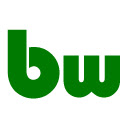
Technology used on website

Website schema(Structured data) analyzer
https://search.google.com/test/rich-results?url=https%3A%2F%2Fwww.fisherdesignandadvertising.com%2F

Website history
https://web.archive.org/web/*/fisherdesignandadvertising.com
Web design
Web design encompasses many different skills and disciplines in the production and maintenance of websites. The different areas of web design include web graphic design; user interface design (UI design); authoring, including standardised code and proprietary software; user experience design (UX design); and search engine optimization. Often many individuals will work in teams covering different aspects of the design process, although some designers will cover them all.[1] The term "web design" is normally used to describe the design process relating to the front-end (client side) design of a website including writing markup. Web design partially overlaps web engineering in the broader scope of web development. Web designers are expected to have an awareness of usability and be up to date with web accessibility guidelines.
History

1988–2001
Although web design has a fairly recent history, it can be linked to other areas such as graphic design, user experience, and multimedia arts, but is more aptly seen from a technological standpoint. It has become a large part of people's everyday lives. It is hard to imagine the Internet without animated graphics, different styles of typography, backgrounds, videos and music. The web was announced on August 6, 1991; in November 1992, CERN was the first website to go live on the World Wide Web. During this period, websites were structured by using the
Related disciplines
Notes
- ^
-based markup and spacer .GIF images
References
- ^ Jump up to:a b Lester, Georgina. "Different jobs and responsibilities of various people involved in creating a website". Arts Wales UK. Retrieved 2012-03-17.
- ^ CPBI, Ryan Shelley. "The History of Website Design: 30 Years of Building the Web [2022 Update]". smamarketing.net. Retrieved 2022-10-12.
- ^ "Longer Biography". Retrieved 2012-03-16.
- ^ "Mosaic Browser" (PDF). Archived from the original (PDF) on 2013-09-02. Retrieved 2012-03-16.
- ^ Zwicky, E.D; Cooper, S; Chapman, D.B. (2000). Building Internet Firewalls. United States: O'Reily & Associates. p. 804. ISBN 1-56592-871-7.
- ^ Jump up to:a b c d Niederst, Jennifer (2006). Web Design In a Nutshell. United States of America: O'Reilly Media. pp. 12–14. ISBN 0-596-00987-9.
- ^ Jump up to:a b Chapman, Cameron, The Evolution of Web Design, Six Revisions, archived from the original on 30 October 2013
- ^ "AMO.NET America's Multimedia Online (Internet Explorer 6 PREVIEW)". amo.net. Retrieved 2020-05-27.
- ^ Jump up to:a b "W3C Markup Validation Service".
- ^ W3C. "Web Accessibility Initiative (WAI)".
- ^ "What is Web Design?". The Interaction Design Foundation. Retrieved 2022-10-12.
- ^ THORLACIUS, LISBETH (2007). "The Role of Aesthetics in Web Design". Nordicom Review. 28 (28): 63–76. doi:10.1515/nor-2017-0201. S2CID 146649056.
- ^ "What is a Web Designer? (2022 Guide)". BrainStation®. Retrieved 2022-10-28.
- ^ Castañeda, J.A Francisco; Muñoz-Leiva, Teodoro Luque (2007). "Web Acceptance Model (WAM): Moderating effects of user experience". Information & Management. 44 (4): 384–396. doi:10.1016/j.im.2007.02.003.
- ^ "Building a resilient frontend using progressive enhancement". GOV.UK. Retrieved 27 October 2021.
- ^ "Rolling out mobile-first indexing". Official Google Webmaster Central Blog. Retrieved 2018-06-09.
- ^ Stone, John (2009-11-16). "20 Do's and Don'ts of Effective Web Typography". Retrieved 2012-03-19.
- ^ World Wide Web Consortium: Understanding Web Content Accessibility Guidelines 2.2.2: Pause, Stop, Hide
- ^ W3C QA. "My Web site is standard! And yours?". Retrieved 2012-03-21.
- ^ Christensen, Mathias Biilmann (2015-11-16). "Static Website Generators Reviewed: Jekyll, Middleman, Roots, Hugo". Smashing Magazine. Retrieved 2016-10-26.
- ^ Soucy, Kyle, Is Your Homepage Doing What It Should?, Usable Interface, archived from the original on 8 June 2012
- ^ Nielsen, Jakob (10 November 2003), The Ten Most Violated Homepage Design Guidelines, Nielsen Norman Group, archived from the original on 5 October 2013
- ^ Knight, Kayla (20 August 2009), Essential Tips for Designing an Effective Homepage, Six Revisions, archived from the original on 21 August 2013
- ^ Spool, Jared (29 September 2005), Is Home Page Design Relevant Anymore?, User Interface Engineering, archived from the original on 16 September 2013
- ^ Chapman, Cameron (15 September 2010), 10 Usability Tips Based on Research Studies, Six Revisions, archived from the original on 2 September 2013
- ^ Gócza, Zoltán, Myth #17: The homepage is your most important page, archived from the original on 2 June 2013
- ^ McGovern, Gerry (18 April 2010), The decline of the homepage, archived from the original on 24 May 2013
- ^ Porter, Joshua (24 April 2006), Prioritizing Design Time: A Long Tail Approach, User Interface Engineering, archived from the original on 14 May 2013
- ^ Spool, Jared (6 August 2007), Usability Tools Podcast: Home Page Design, archived from the original on 29 April 2013
- ^ Jump up to:a b Messner, Katie (22 April 2013), Image Carousels: Getting Control of the Merry-Go-Round, Usability.gov, archived from the original on 10 October 2013
- ^ Jones, Harrison (19 June 2013), Homepage Sliders: Bad For SEO, Bad For Usability, archived from the original on 22 November 2013
- ^ Laja, Peep (8 June 2019), Image Carousels and Sliders? Don't Use Them. (Here's why.), CXL, archived from the original on 10 December 2019
- ^ Oleksy, Walter (2001). Careers in Web Design. New York: The Rosen Publishing Group, Inc. pp. 9–11. ISBN 978-0-8239-3191-0.
- ^ Visser, Larno, et al. ChatGPT for Web Design : Create Amazing Websites. [First edition]., PACKT Publishing, 2023.
Local Web Page Designers Jax Florida
